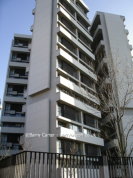





Docklands and the Thames,
Victoria Park to Paternoster
Square. Take a nostalgic
trip back to the East End in
the 1950’s or a stroll around
the Square Mile of the City
of London. It’s all here at
barryoneoff.co.uk
Copyright 2002 - 2024 ©Barry Carter. All rights reserved
THE BOROUGH of BETHNAL GREEN
Origin of the name
The original green, The Green and Poor's Land, was open space which today houses Bethnal Green Library, the Museum of Childhood and St Johns Church. A large house called Blithe Hall was built near the green. The earliest record of this is in an eighth century document so Blithe Hall Green is the starting point. By the sixteenth century, John Stow in his survey, called it Bethen Hall Green. A hundred years later and Samuel Pepys recorded a journey to Bednall Green. On it went until known by it’s present name. The land surrounding the area was bought up by rich house owners In 1678 in order to prevent further building and in 1690 the land was put into trust under which it would be kept open and rent from it used to help the poor of the area. Up until 1891 the trust administered the land.Kirby’s Castle
Kirby's Castle, was the principal house on the Green. One of it's owners was Sir Hugh Platt (1552–1608), author of books on gardening and practical science. Some say the house was associated with the Blind Beggar of Bethnal Green but I can find no conclusive evidence of this. In 1727 the mansion was turned into a private asylum for what were then classed as mental patients or ‘lunatics’. The original building stood until 1843 when it was demolished. The new asylum that was opened in it’s place went on until 1920 before being closed to make way for the housing estate mentioned earlier. The inmates were transferred to Salisbury. Even today, Bethnal Green Gardens is known locally as “Barmy Park”.Arrival of the Weavers
The early 1700's were the start of major expansion of the small settlement of Bednall Green. Once there were a few dwellings and large houses built by the wealthy around the green. Now began the building of many smaller houses. These would become home to the vast influx of weavers who arrived and would eventually dominate the area. Silk workers from France had arrived in England 200 years previously and managed to establish a flourishing industry. Originally opening their looms in Spitalfields, they then went on to establish Mile End New Town, and the overspill from these areas headed for Bethnal Green. In time, the greatest number of weavers were based here. Who would believe that a hundred years later the area was to become full of poverty and overcrowded slums.Continuing Immigration
The East End, including Bethnal Green, has always had immigrants who seemed to move on after many years only to be replaced by another group. Among them were the Huguenots, Jews, Chinese, West Indians, Turks and others. In the last thirty or forty years they have come from Bangladesh and other Muslim countries. They are now in the majority and it looks like they will remain. As well as the Asians, many people from all over the world have turned it into a cosmopolitan borough. Walk around the area in 2022 and you will hear Spanish, French, Italian, Portuguese among others. There are also a great deal of “middle class” youngsters and families moving into the area. Seems that this is the “In” place to be at the moment. Let’s hope it continues.A Brief History
There was probably a small settlement on the site of the original green as far back as the Roman occupation. Green Street (renamed Roman Road in the 1950’s) showed buried artefacts from the period when the Central Line was being excavated in the late thirties. As time passed, a few wealthy citizens built their large mansions around the original green, and over the centuries it went from pleasant countryside to the filthy overcrowded slums of the Victorian era. Full of poverty and disease. It has since then improved and today it is attracting many City people and “trendies”, as they are sometimes referred to. Unfortunately not everybody wants to accept this gentrification of the area. I for one am glad to see the changes (apart from the price rises). Property prices and rents in the area are soaring. Even eyesores like the moderately famous Keeling House were bringing upwards of £250,000 and more for an apartment in 2002. Not bad when you consider it was a council block condemned for being unsafe and left empty for years. Then being sold by the council for a pittance to developers. More than £600,000 on 6th. floor in 2020. How much a penthouse?




















